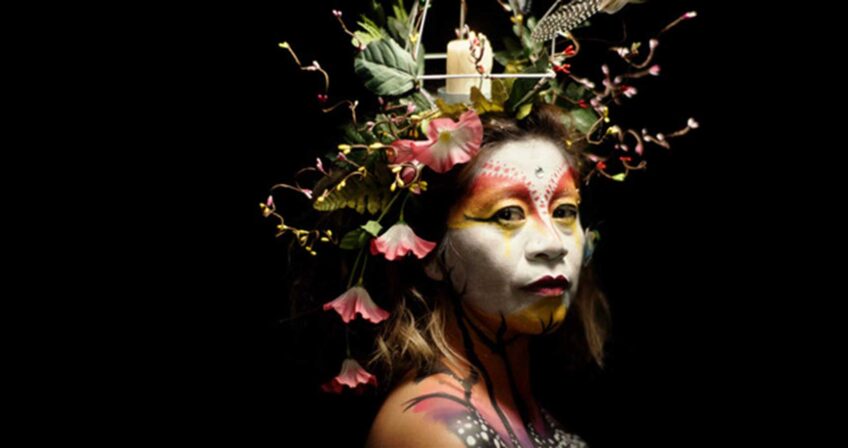
Students, artists and community members created over 400 hand-painted suitcases for Nora Valdez’s “Immigration Nation” exhibit at Urbano Project, on display through July 29. The tactile sculptural installation confronts the struggle of immigrants to find identity and acceptance in the United States.

Author: Celina ColbyCultural critique figures prominently in Nora Valdez’s “Immigration Nation.”
On the Web
To learn more about artist Nora Valdez, visit: urbanoproject.org
Eucaris Jimenez, a 20-year-old student at UMass Boston, painted her suitcase with a wide, open sky and a calm sea below. The sun shines brightly and a boat bobs peacefully in the restful waters. “The message behind the suitcase is that someone doesn’t have to be an immigrant or undocumented to get on a boat and look around,” says the artist.
Jimenez’s favorite suitcase is by a Korean artist and features colorful pop culture allusions. From the Dominican Republic herself, Jimenez is a self-proclaimed Koreaphile. A culturally inclusive attitude is showcased on one end of the gallery with a wall of black-and-white portraits of the artists. Not all the makers are represented but those pictured display a diverse spectrum of age, gender and race.
Perpendicular to the portraits hang three white suitcases with black silhouettes painted into them. One case has a man in the trappings of Hasidic Judaism, one has a woman in a hijab and the third has a man in a sombrero and poncho. On each of the silhouettes is a bright red target. At the center of each target is the American flag. The images sharply critique the United States for turning people away on the basis of thin cultural stereotypes and prejudices.
Above the three white suitcases hangs a circle painted with Aztec symbols and lined by the names Hernan Cortes, Christopher Columbus and Pizarro. The three famous Spanish conquistadors snatched the Americas from their indigenous inhabitants and claimed the land for themselves. Columbus’ famous 1492 journey was more than 500 years ago, yet the sentiment “This is ours, not yours” lives on. Some suitcases tell personal stories about coming to the United States; others focus on the fight to stay here.
The 400 suitcases of “Immigration Nation” represent the coming together of people from dozens of cultural backgrounds, united in the face of oppression. Jimenez says, “Right now immigrants are in a difficult situation. This is a piece of strength for our community.” Their bags may be packed, with powerful sentiment and artistic courage anyway, but these immigrants aren’t going anywhere.







